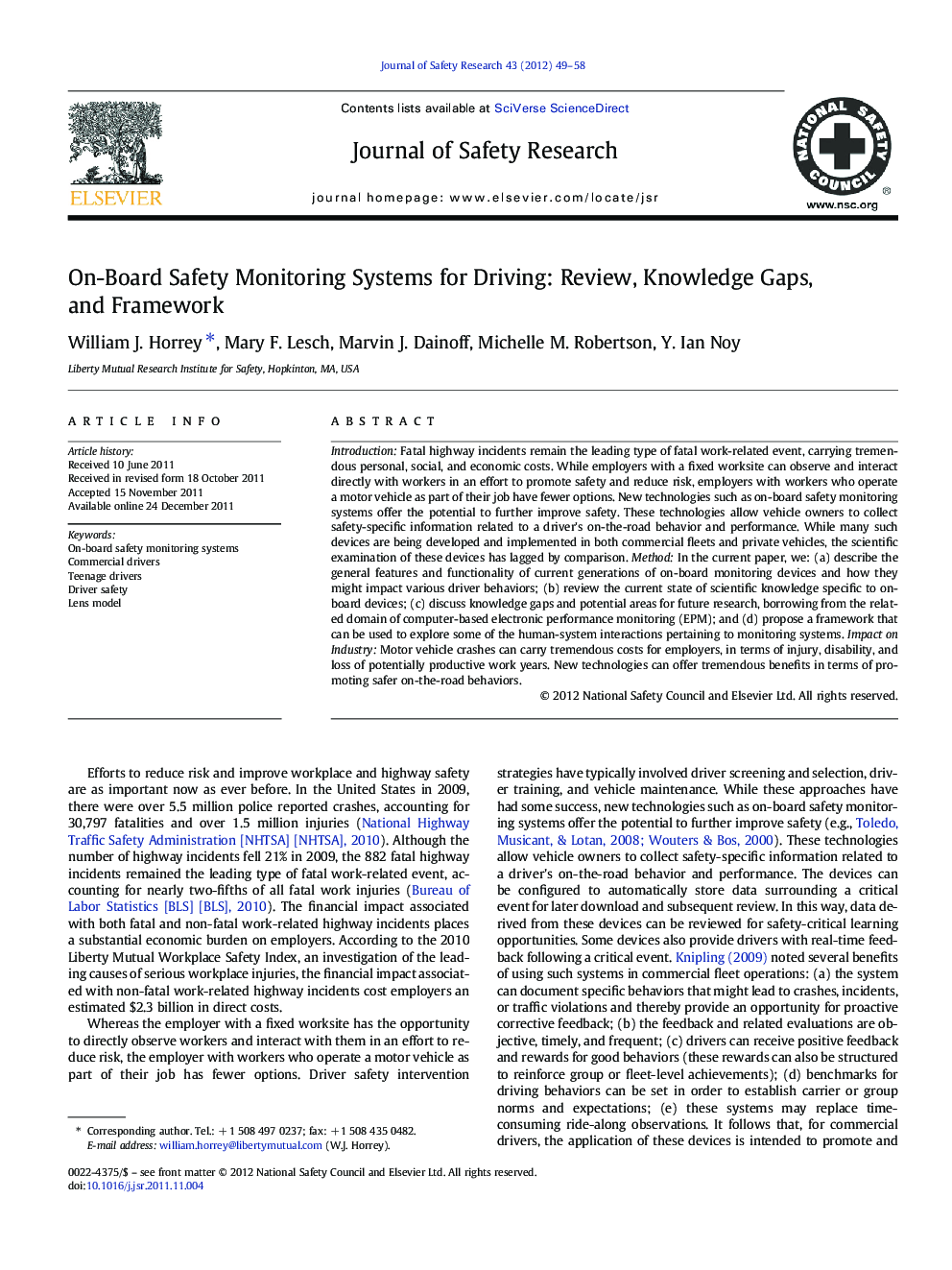| کد مقاله | کد نشریه | سال انتشار | مقاله انگلیسی | نسخه تمام متن |
|---|---|---|---|---|
| 587453 | 878406 | 2012 | 10 صفحه PDF | دانلود رایگان |

IntroductionFatal highway incidents remain the leading type of fatal work-related event, carrying tremendous personal, social, and economic costs. While employers with a fixed worksite can observe and interact directly with workers in an effort to promote safety and reduce risk, employers with workers who operate a motor vehicle as part of their job have fewer options. New technologies such as on-board safety monitoring systems offer the potential to further improve safety. These technologies allow vehicle owners to collect safety-specific information related to a driver's on-the-road behavior and performance. While many such devices are being developed and implemented in both commercial fleets and private vehicles, the scientific examination of these devices has lagged by comparison.MethodIn the current paper, we: (a) describe the general features and functionality of current generations of on-board monitoring devices and how they might impact various driver behaviors; (b) review the current state of scientific knowledge specific to on-board devices; (c) discuss knowledge gaps and potential areas for future research, borrowing from the related domain of computer-based electronic performance monitoring (EPM); and (d) propose a framework that can be used to explore some of the human-system interactions pertaining to monitoring systems.Impact on IndustryMotor vehicle crashes can carry tremendous costs for employers, in terms of injury, disability, and loss of potentially productive work years. New technologies can offer tremendous benefits in terms of promoting safer on-the-road behaviors.
► On-board monitoring systems offer the potential to improve driver safety.
► The technology has outpaced scientific study of the implications of these systems.
► We describe features of current systems and how they can impact driver behavior.
► We review the literature; discuss knowledge gaps and areas for future research.
► We propose a framework to explore human-system interactions with these systems.
Journal: Journal of Safety Research - Volume 43, Issue 1, February 2012, Pages 49–58